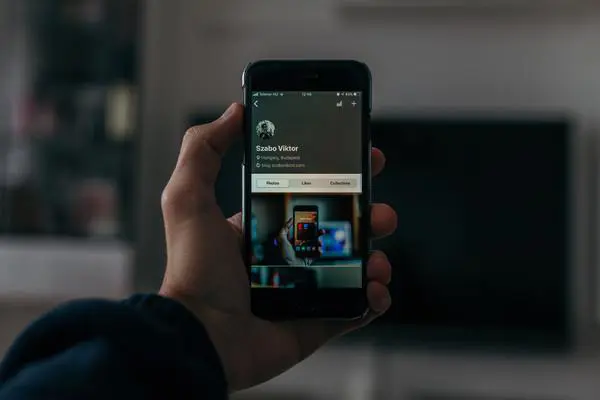Blog
What Are Progressive Web Applications and How Do They Work
14 April 2020
While progressive web applications (also known as PWAs) have been around for a few years, web designers can expect to see many more of them in the coming year and beyond.

What Are Progressive Web Applications?
A PWA is a type of web application. According to developers Alex Russell and Frances Berriman, who originated the term, a PWA has the following characteristics:
- It’s responsive and fits any form factor.
- It's connectivity-independent, meaning that you don’t have to be connected to the Internet to use the app.
- You can use it the same way you’d use a regular app with the same interactions and navigation.
- It is always up-to-date.
- It is secure because it’s served up with a Transportation Security Layer.
- It is discoverable, meaning that search engines can find it.
It is re-engageable, which means that once the app is connected to an Internet connection, the app works the way it should. - It is installable; you can add it to your home screen through easy browser prompts.
- It is easy to share
There are three baseline criteria PWAs must fulfill to be considered PWAs:
- They run under HTTPS.
- Web designers need a web app manifest.
- There must be a service worker.
How Do Progressive Web Applications Work?
A PWA allows users to navigate the app and perform certain functions (such as viewing messages or responding to messages) even when the device isn’t connected to the Internet. Although WhatsApp doesn’t have a huge user base in New Zealand, it does represent an excellent example of a PWA. When it’s not connected to the Internet, you can still check your messages and even answer them. However, WhatsApp won’t send the messages and you won’t receive any push notifications about new messages until you have an Internet connection.

Why Are Progressive Web Applications So Popular?
PWAs are becoming more and more popular; experts believe they’ll be one of the top web development trends of 2020. Why is that the case?
- Low barrier to usage
- Better user experience
- Best of both worlds (mobile sites and native apps)
- More economical to build
Low Barrier to Usage
One of the selling points of PWAs is that there’s not a barrier to usage. Not all native apps work on Android and iOS; some applications are only available for a given operating system. Moreover, a native app requires a user to go to the app store and then download the app; for some users, that’s an irritation. If they don’t have room on their device, they can’t download the app at all.
PWAs don’t have that problem. They run in a web browser, so users don’t have to concern themselves with downloads.
Better User Experience
Another reason PWAs are popular is that they provide a better user experience than mobile sites. Unfortunately, mobile sites tend to deliver poor UX because of the way they’re designed. When mobile device users visit a site, they don’t want to hang around. They have a goal, and they want to fulfill it quickly. Many mobile sites aren’t built with that in mind.
In contrast, PWAs function like a native app. They allow a user to accomplish their goal or task quickly and with minimal hassle.
Best of Both Worlds
A third reason PWAs are so popular is that they combine the best of mobile sites and native apps.
Users don’t have to download anything, which is similar to visiting a mobile app. Yet, a PWA works like a native app does, so they can get what they need to get done without wasting time. As a result, you have a happier user base.
More Economical to Build
Yet another reason why PWAs are becoming more widespread is that it’s more efficient to design them than a native app. For a native app, you need someone who knows how to build apps for a given operating system. That’s not the case for PWAs.
A web designer only has to build one version of a PWA. Moreover, they’re faster to build and quicker to update, making them a cost-effective choice for web development firms.
How Can Progressive Web Apps Help Your Organisation?
It’s clear why PWAs are a rising star in the web design world. Here's how they can work for your firm.
- Higher conversion rates
- Faster time to market
- Better customer relationships
Higher Conversion Rates
One of the ways PWAs help your firm is by boosting conversion rates. PWAs offer a better user experience than mobile sites. A better user experience makes it easier for users to get things done within the application, such as completing the next step in a sales funnel or even making a purchase. The better the user experience, the higher the conversion rate.
Faster Time to Market
Another advantage of PWAs is that they’re faster to develop. Web designers won’t spend as long creating PWAs as they would with a native app.
That means that you’ll have faster time to market for your application. The sooner your application is in the hands of users, the more profitable it will likely be.
Better Customer Relationships
Because PWAs offer a better user experience, your reputation is enhanced for providing a PWA. Everyone prefers working with a company that has a useful product.
Users will want to continue working with you in the long run when they see you can deliver useful and delightful experiences and products. You’ll forge deeper and long-lasting relationships as a result.
Enlighten Designs: Create Your Progressive Web Application with Us
Since 1998, Enlighten Designs has been designing amazing digital experiences for our clients. Today, our web designers create PWAs to delight our clients and their users. We can help you create a PWA that offers an excellent user experience, gets to market faster, and helps you forge a long-lasting relationship with your clients. To learn more, contact us today.
Recent Articles
Want to stay updated with what we are doing?
Subscribe to our newsletter for our ideas about development, marketing, and technology. See our latest work, find out about career opportunities, and stay notified about upcoming events.
Subscribe to our newsletter

